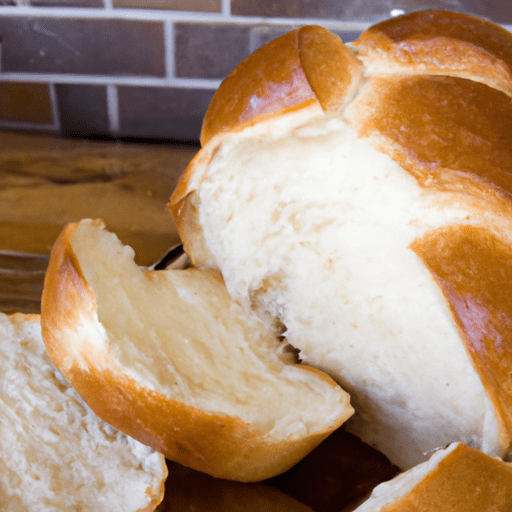The Delicious Delicacy: Hawaiian Bread
Have you ever tasted Hawaiian bread? This soft, slightly sweet bread is a culinary sensation that originated from the beautiful islands of Hawaii. Its unique flavor and versatile nature have made it a beloved choice for sandwiches, French toast, and even as a standalone treat. In this blog post, we will delve into the world of Hawaiian bread, exploring its taste, common uses in cooking, nutritional value, and uncovering some intriguing history and facts.
Taste and Texture
Hawaiian bread is characterized by its irresistible taste and distinct texture. It boasts a slightly sweet flavor with hints of vanilla and butter, making it a delightful departure from traditional bread. The addition of pineapple juice or pineapple extract contributes to its unique taste, rendering the bread moist and tender. With a pillowy soft texture, it practically melts in your mouth.
Common Culinary Uses
Hawaiian bread’s distinct taste and texture make it a versatile ingredient in a variety of dishes. Here are just a few common culinary uses:
1. Hawaiian Sliders
Thanks to its softness and slightly sweet flavor, Hawaiian bread is an excellent choice for sliders. Its ability to pair well with both savory and sweet fillings makes it the perfect base for creating mouthwatering mini-sandwiches.
2. French Toast
Take your breakfast to the next level by using Hawaiian bread to make French toast. The slight sweetness of the bread adds a delightful twist to this classic morning staple. Top it with fresh fruit, maple syrup, or a dusting of powdered sugar for a truly memorable breakfast experience.
3. Bread Pudding
Hawaiian bread’s soft and sweet nature lends itself perfectly to creating delectable bread puddings. Combine it with creamy custard and your choice of mix-ins, such as chocolate chips, dried fruits, or nuts, to create a comforting and indulgent dessert.
4. Breadcrumbs and Croutons
Transform your leftover Hawaiian bread into homemade breadcrumbs or croutons. Crumble it into small pieces and toast it in the oven for homemade, flavorful additions to salads, soups, or casseroles.
Nutritional Value
While Hawaiian bread’s mouthwatering taste may tempt you, it’s essential to consider its nutritional value. On average, a serving (approximately 57g or 1 slice) of Hawaiian bread contains:
- Calories: 180
- Total Fat: 3g
- Saturated Fat: 1.5g
- Total Carbohydrate: 32g
- Fiber: 1g
- Sugar: 5g
- Protein: 4g
It’s worth noting that these values may vary depending on the specific brand or homemade recipe. Moderation is key when enjoying this delightful treat as part of a balanced diet.
Facts and History
Beyond its delectable taste and culinary uses, Hawaiian bread holds some captivating history and facts:
An Iconic Brand: King’s Hawaiian is one of the most recognizable brands that popularized Hawaiian bread outside the islands. Founded by Robert R. Taira in Hilo, Hawaii, in the 1950s, their sweet bread recipe quickly gained popularity, eventually becoming a household name.
Originating from Portugal: While commonly associated with Hawaii, the origins of Hawaiian bread can be traced back to Portuguese sweet bread. Immigrants from Portugal brought their traditional sweet bread recipe to Hawaii during the late 19th and early 20th centuries. The addition of pineapple juice or extract was an innovation that gave birth to the uniquely Hawaiian version we know today.
Sweet Bread Festivals: The Portuguese influence on Hawaiian bread is celebrated annually with Sweet Bread Festivals held in various locations across the islands. These festivals showcase the artistry and deliciousness of this beloved bread, featuring baking contests, live entertainment, and, of course, plenty of indulgent sweet bread to sample.
Feel inspired to try baking your own Hawaiian bread or experimenting with it in different recipes? Though traditionally made from scratch, you can also find Hawaiian bread mixes or pre-made loaves in many grocery stores. Bring a taste of the islands to your table and savor the unique flavors and history of this delightful bread.
Now that you know more about Hawaiian bread’s remarkable taste, culinary uses, nutritional information, and captivating history, it’s time to embrace this delectable delight. Whether you’re enjoying it as a slider bun, French toast, or even a standalone treat, Hawaiian bread will transport your taste buds to the sunny shores of Hawaii with each bite.
Hawaiian Bread
Hawaiian bread, also known as “King’s Hawaiian bread,” is a sweet, soft bread that originated in Hawaii. It is characterized by its fluffy texture and slightly sweet taste.
It was created by Robert Taira, a Japanese-American baker who founded the King’s Hawaiian Bakery in Hilo, Hawaii, in the 1950s.
The bread was originally made as a representation of Portuguese sweet bread, a popular bread in Hawaii at that time. Robert Taira’s version incorporated influences from his Japanese heritage and the local Hawaiian flavors, resulting in the creation of Hawaiian bread.
Hawaiian bread is commonly used to make sandwiches, burgers, French toast, bread pudding, and other sweet treats.
Its slightly sweet flavor and soft texture make it versatile enough to be used in both savory and sweet dishes.
The nutritional benefits of Hawaiian bread are comparable to regular bread. It is a good source of carbohydrates and provides energy. The specific nutritional content may vary depending on the brand or recipe used.
Hawaiian bread is often enjoyed as a special treat during holidays and celebrations, such as the Thanksgiving and Christmas seasons in the United States.
What sets Hawaiian bread apart from other breads is its unique round shape and its distinctive fluffy and light texture.
The bread is made using a special technique that involves adding a pineapple juice-based sweetener called “Hawaiian dough enhancer.” This enhancer gives the bread its slightly sweet taste, softness, and prolonged shelf life.
Over the years, Hawaiian bread has gained popularity outside of Hawaii and is now widely available in supermarkets across the United States. It has become a staple in many households for everyday use as well as for special occasions.




Use the share button below if you liked it.
It makes me smile, when I see it.